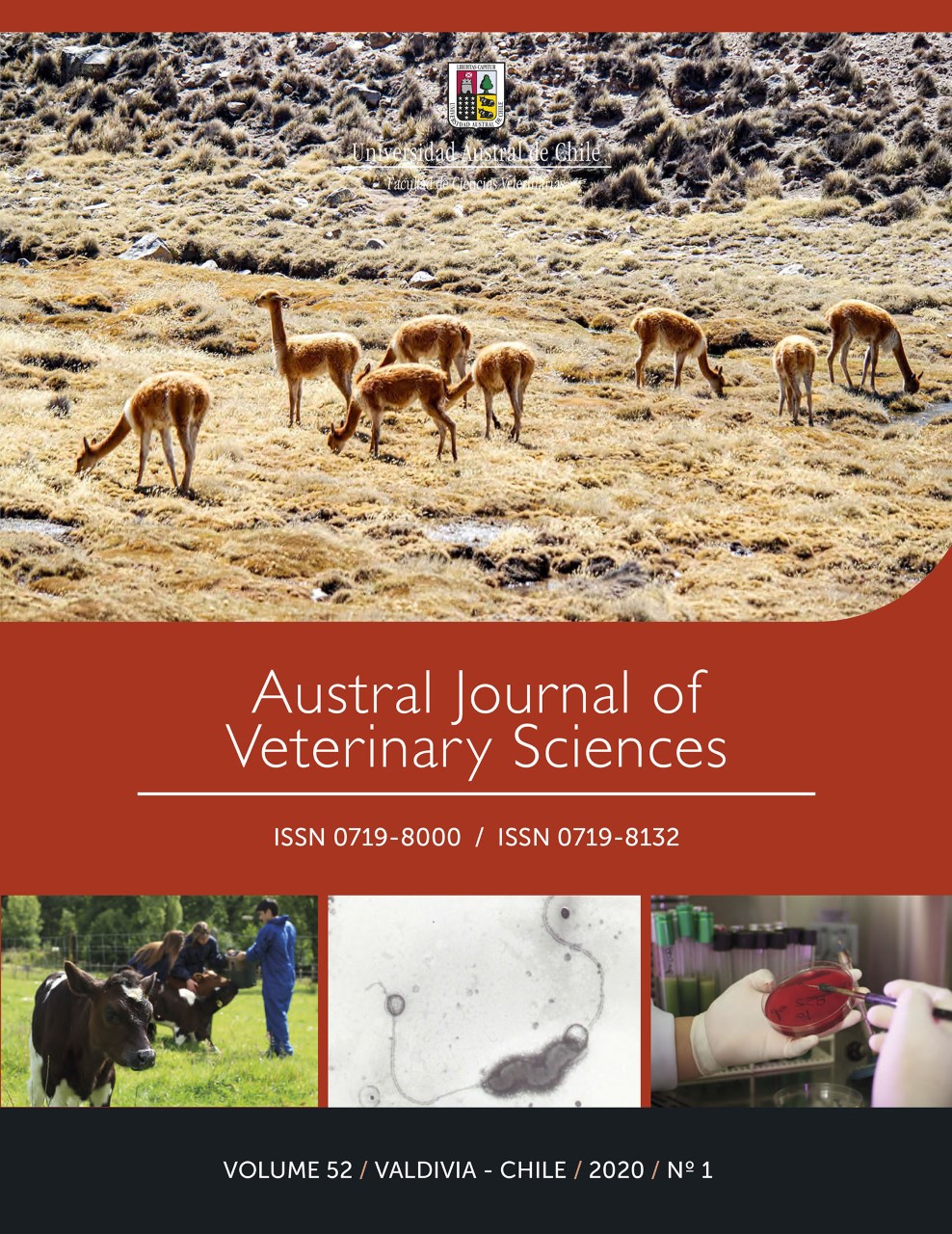Histopathological lesions compatible with nymphs of Linguatula serrata in bovine liver
Contenido principal del artículo
Resumen
Linguatula serrata is the causative parasite of Linguatulosis, a disease that not only produces economic losses in cattle but also represents a public health risk due to its zoonotic nature. This study aimed to microscopically characterise the compatible lesions produced by this parasite in bovine liver collected at a slaughterhouse in the city of Curicó, Chile. Histologic compatible lesions with Linguatulosis were observed in 18 out of 269 livers. Furthermore, nymphs were visualised in 3 cases, allowing an etiologic diagnosis. Microscopic lesions containing nymphs demonstrated two patterns of inflammatory reactions, one pattern with a predominance of eosinophils, accompanied by lymphocytes and some macrophages, and another pattern with a predominance of lymphocytes and plasma cells with some macrophages. A microscopic characterisation was performed in compatible lesions without nymphs (n=15), defining 4 types of granulomas attributable to visceral Linguatulosis, according to the presence and features of cells at the centre of the lesion, the presence of presumably degenerated nymphal structures, location of inflammatory infiltrate, as well as location and amount of surrounding fibrous tissue. These lesions can concede a presumptive microscopic diagnosis. Also, different microscopic features of granulomas compatible with Linguatulosis analysed in this study suggest a temporal evolution of the lesions. The description of lesions generates a better understanding of the host-parasite interaction of this agent which has importance in both animal productivity and public health.

